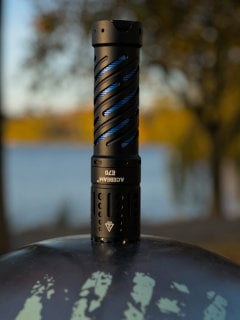I believe that with the aux lights, it’s a hardware limitation.
The TiTS10 has the new multi-channel Anduril that allows you to enable each color of aux as a channel; try 9H from On and keep holding. However, it only has them on High with 1H/2H doing nothing. You can 3C between them and normal operation (Channel 1; main emitters), but that’s it.


A less expensive light with many choices of superior emitters seems better to me. Then again, for those that can’t tell CRI 94 from CRI 74 or tell a 219b from a 219c from the amount of green and go solely by lumens, I can see why some folks wouldn’t care about the things that set the KC1 apart from the others.